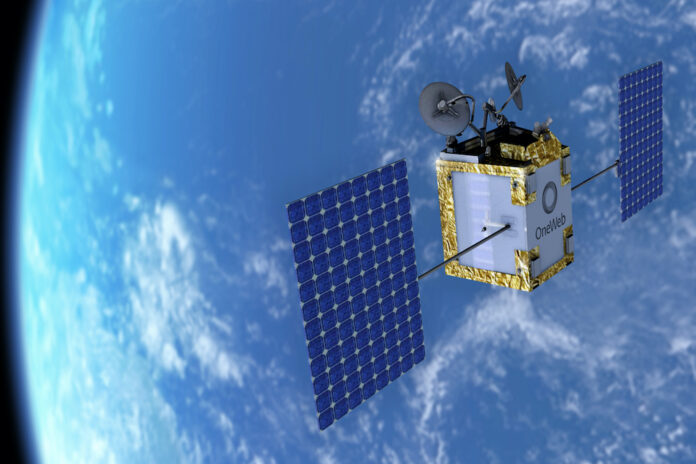ESA and partners achieve world’s first 3GPP Rel-19 5G-Advanced NR-NTN connection over the OneWeb constellation
The European Space Agency (ESA), MediaTek, Eutelsat, Airbus, Sharp, ITRI and Rohde & Schwarz have demonstrated what they said was the world’s first 3GPP Release 19-compliant 5G-Advanced Non-Terrestrial Network (NR-NTN) link using Eutelsat’s OneWeb low Earth orbit (LEO) satellites, marking a key milestone in integrating satellite and terrestrial 5G networks.
The trial, conducted at ESA’s European Space Research and Technology Centre (ESTEC) in the Netherlands, successfully established and handed over a 50 MHz Ku-band 5G-Advanced NR-NTN connection using OneWeb satellites built by Airbus. The test validated conditional handover (CHO) capability, a key Rel-19 feature, and confirmed full interoperability between the satellite link, MediaTek’s NR-NTN chipset, and ITRI’s NR-NTN gNB.
ESA said the result represents the first live demonstration of a Rel-19 NR-NTN configuration compliant with the 3GPP standard, paving the way for satellite-terrestrial interoperability within a shared ecosystem. The collaboration aligns with ESA’s Space for 5G/6G & Sustainable Connectivity programme, which aims to merge terrestrial and non-terrestrial infrastructures to deliver ubiquitous coverage and improve network resilience.
Conditional handover enables a user device to receive advance handover commands from the network and execute them only when certain radio conditions are met. This approach reduces latency and service interruption compared with traditional hard handover methods – a critical advantage for LEO satellite constellations, where rapidly moving beams require frequent and precise transitions between cells. Demonstrating CHO over OneWeb’s LEO network confirms that 5G-Advanced NR-NTN standards can support seamless mobility and low-latency performance comparable to terrestrial 5G networks.
David Phillips, head of systems, strategic programme lines and technology at ESA’s Connectivity and Secure Communications directorate, said the success underscores the importance of industry collaboration in boosting Europe’s satellite communications sector. “By partnering with Airbus Defence and Space, Eutelsat and others, this innovative step in the integration of terrestrial and non-terrestrial networks proves why collaboration is an essential ingredient in boosting competitiveness and growth,” he said.
The trial used OneWeb’s Ku-band service link and Ka-band feeder link architecture, operating with transparent transponders and “Earth-moving beams” to support dynamic coverage. A Sharp-developed flat panel user terminal established the satellite connection to the 5G core network on the ground through a gateway antenna at ESTEC.
Real-world connections
Mingxi Fan, head of wireless system and ASIC Engineering at MediaTek, said the test demonstrates progress towards commercialising 3GPP-based wideband NR-NTN connectivity. “By making real-world connections with Eutelsat LEO satellites in orbit, together with our ecosystem partners, we are another step closer to bringing next-generation 3GPP-based NR-NTN satellite connectivity for commercial uses,” he said.
Daniele Finocchiaro, head of telecom R&D and projects at Eutelsat, said the company was the first satellite operator to test NTN broadband over Ku-band LEO satellites. “Collaboration with important partners is a key element when working on a new technology, and we especially appreciate ESA’s support,” he said, adding that the work will help shape the future of broadband connectivity.
Airbus, which built the OneWeb satellites, highlighted the trial’s confirmation of handover capability as a major advance in NR-NTN evolution. “The successful showcase of Advanced New Radio NTN handover capability marks a major step towards enabling seamless, global broadband connectivity for 5G devices,” said Elodie Viau, head of telecom and navigation systems at Airbus.
Sharp’s president and CEO, Masahiro Okitsu, praised the role of the company’s newly developed user terminals. “This achievement marks a significant step toward the practical implementation of non-terrestrial networks,” he said.
The trial also drew on ITRI’s NR-NTN gNB technology and Rohde & Schwarz’s test and measurement systems. ITRI vice president Dr Pang-An Ting said the work showed the potential for 3GPP NTN communication to deliver seamless integration with terrestrial networks. R&S’s vice president of mobile radio testers, Goce Talaganov, said the company’s test suite replicated the Ku-band handover scenarios in the lab, enabling performance optimisation for MediaTek’s and Sharp’s devices.
ESA said the demonstration validates the role of its Space for 5G/6G & Sustainable Connectivity initiative within the ARTES programme. With the adoption of 3GPP Rel-19 standards across satellite and terrestrial ecosystems, future deployments are expected to provide universal, standardised connectivity for smartphones, IoT and automotive applications.




